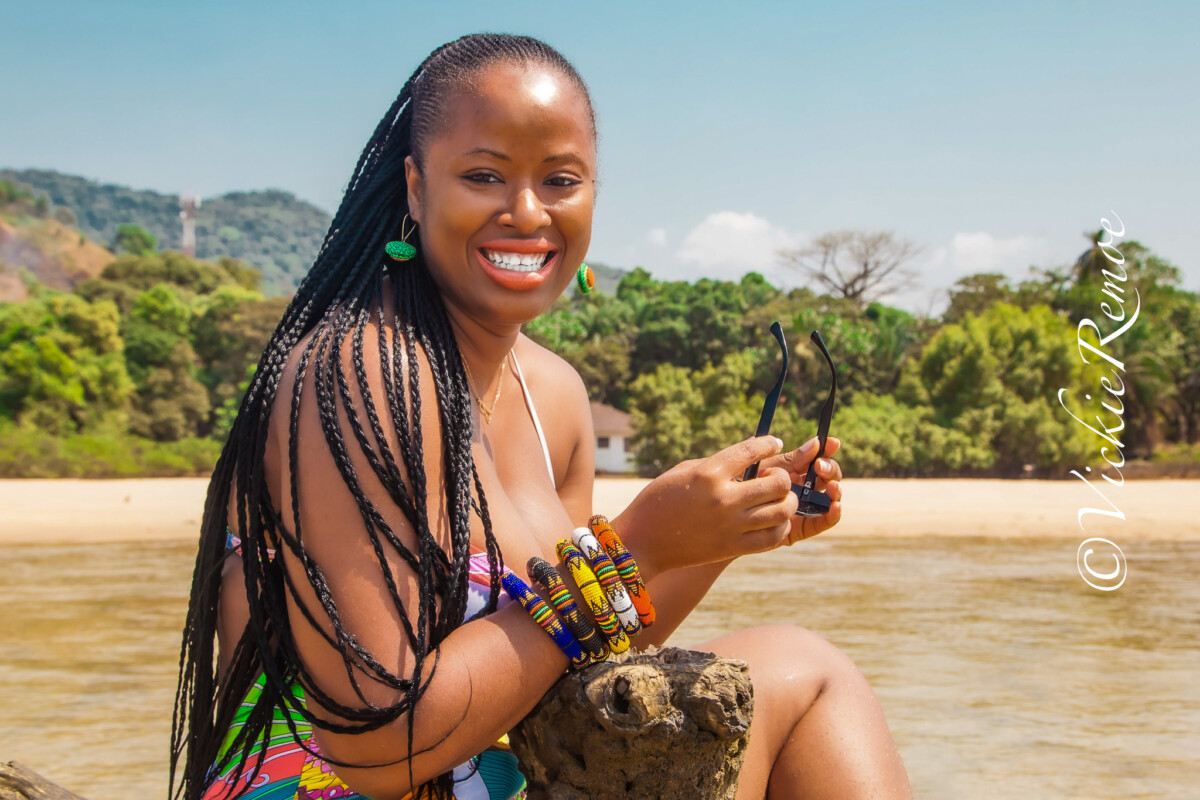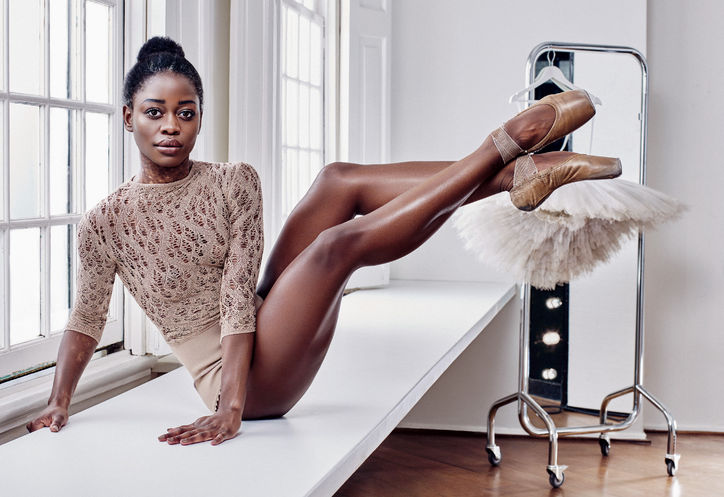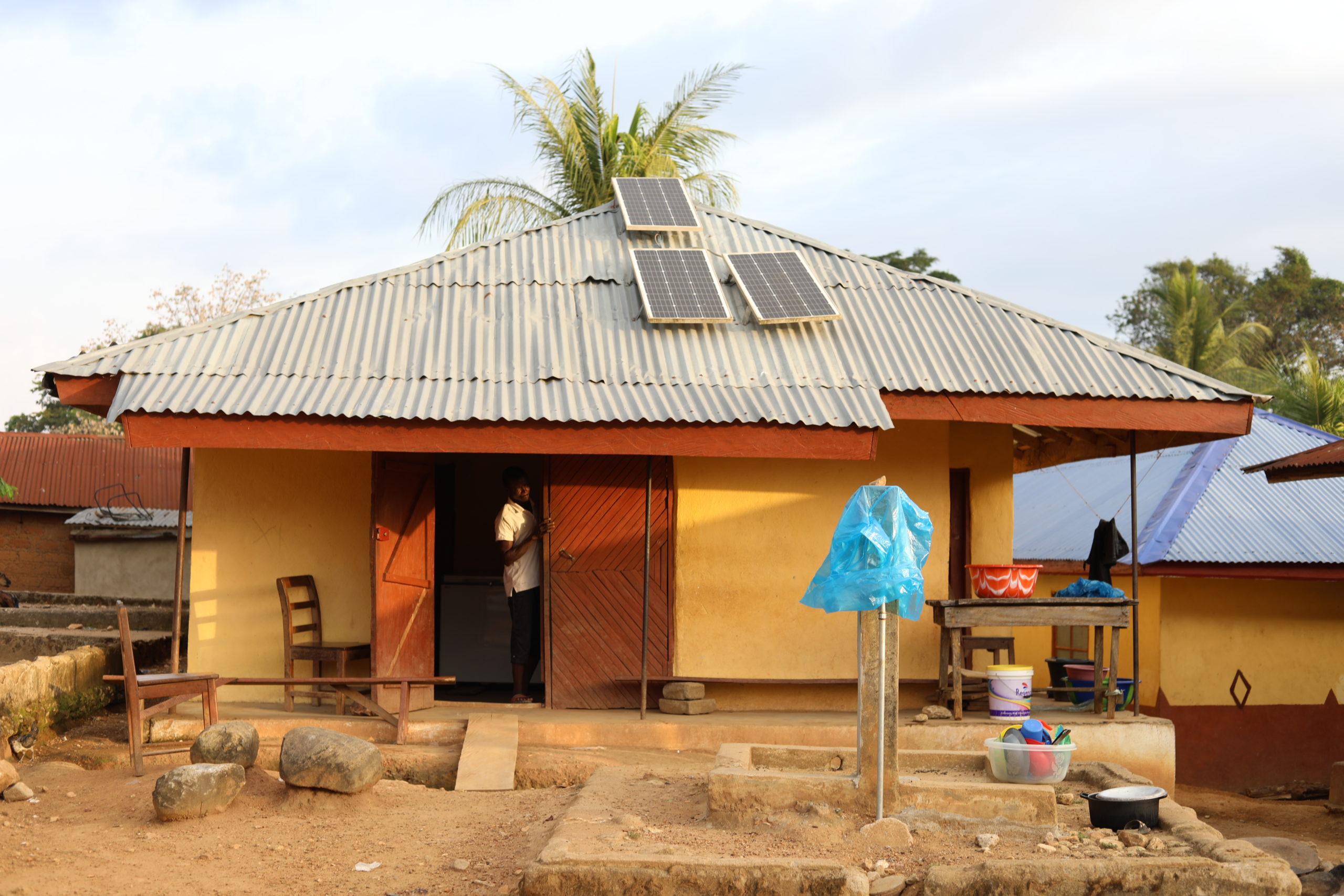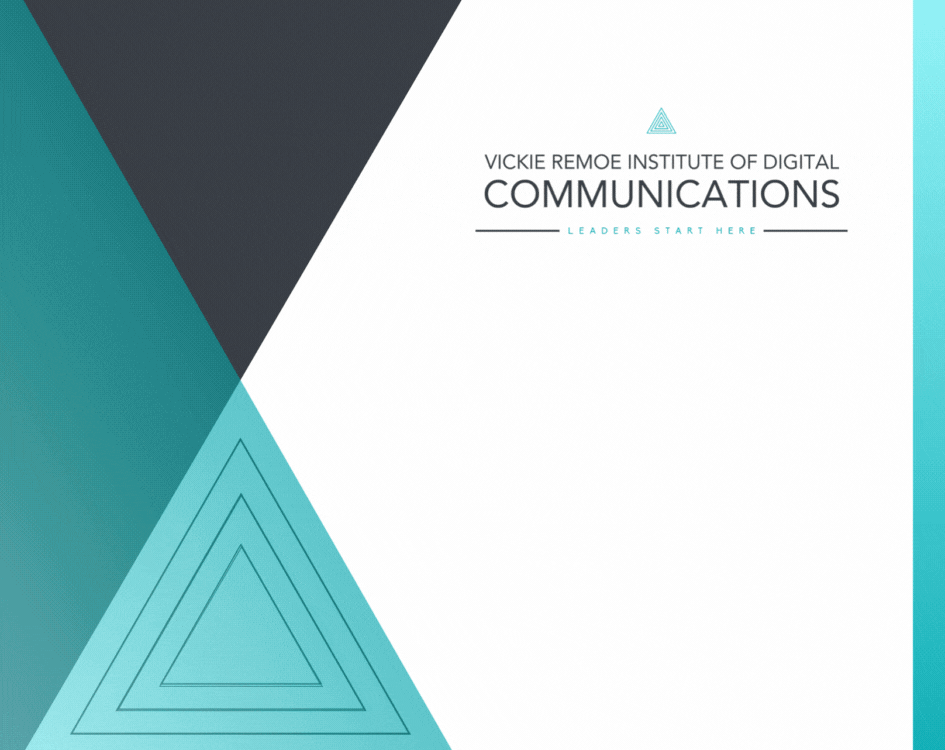
Africa’s Melting Pot

Sierra Leone is like many other countries in West Africa; the people are warm and hospitable, and the flora and fauna are tropical, but what makes modern-day Sierra Leone distinct is that it is Africa’s melting pot. In the first half of the 19th century (1800-18500s), the British Royal Navy repatriated an estimated 50,000-80,000 Africans in Freetown. These men and women were captured by slave traders from all over the continent. They came from present-day Nigeria, Ghana, and Congo joined Freetown’s settlers who came from England, Nova Scotia, Jamaica, and America. The community that emerged from this mix of people are the Krio or Oku or Creoles. Their descendants live in Freetown. The Krios are one of the sixteen ethnic groups in Salone that solidify the nation’s place as the melting pot of Africa.
- Krio educator and poet, Daphne Pratt teaches Krio alphabet and sounds to children in her home in Freetown on March 21, 2020
- Daphne Pratt, teaches the Krio “a” vowel sound “ah”
- Daphne Pratt is the author of three Krio language books
The People of Sierra Leone
This small West African country is known for having one of the most vibrant populations on the continent. There are sixteen distinct ethnic groups in Sierra Leone, although several have dwindled due to intermarriage or the cultural dominance of larger groups.

Vickie Remoe (the author) I’m of mixed parentage. My mom is Temne and Fulani from Port Loko District. My father is Krio and Yoruba, born in Lagos and raised in Freetown, a descendent of recaptives.
One thing to know about people from Sierra Leone is that they do not have a specific look. Sierra Leoneans come in different shades, shapes, and facial features. You won’t be able to tell a Temne person from a Mende person or Kono from a Yalunka. The one group that might stand apart is the Fulani, the reason being that they are the least likely to marry outside of their ethnicity. It is also the norm for Sierra Leone Fulanis to marry cousins and keep relations in the family. Madingos and Temne also marry cousins though the custom is not as strong as it used to be.
Ethnic groups
- Krio Descendants are from Freetown, Western Area of Sierra Leone. Although they’re one of the smallest ethnic groups in Sierra Leone, the Krio language is the most widely spoken language in the country
- A Krio woman in wears traditional print style kotoku and kabaslot
- Kuranko people can be found in Koinadugu District in the North East of Sierra Leone, they are also in Guinea
- Kuranko dancers
- Limbas are the third largest ethnic group in Sierra Leone. They can be found in the Northern Province across several districts
- Limba men
- Mende are the second largest ethnic group in Sierra Leone and can be found in the South and East of Sierra Leone
- Mende Women
- A Sierra Leonean griot wears a gown in the national flag as he sings songs of praise in Madingo on Lumley beach in Freetown on the morning of March 08, 2018.
The two largest ethnic groups in Sierra Leone are the Temne, with 35.5 % of the population, and the Mende tribe with 31.2%. It is important to note that people often identify patrilineally. If a Fulani woman marries a Temne and they have a child, that child is considered Temne, the same for Mende. It is the norm for ethnic groups to intermarry so amongst those identifying as Temne you’ll find ethnic Bullom (predecessors of Temnes), Loko, Limba, or amongst Mende you’ll also find ethnic Gallina and Gola. The Limba in the north are 6.4% of the total population.
The other ethnic groups include the Fula, Madingo, Kono, Krio/ Oku, Kuranko, Loko, Madingo/Madinka Susu and Yalunka, Kissi, Vai, Kru, and Sherbro. You’ll also find small Indian and Lebanese communities who are descendants of traders and merchants who first came into the country in the 19th century. Many of the Indian-Sierra Leoneans and Lebanese-Sierra Leoneans you’ll come across are second and third-generation Sierra Leoneans who were born in Salone.
Sierra Leoneans in the diaspora

Usifu Jalloh performs to audience of 200 attendees at the Sierra Leone Diaspora Investment Conference in New Carrollton, Maryland on October 7, 2023.

Michaela DePrince, Sierra Leonean-American Ballerina. Michala was orphaned during the civil war and adopted by an American family. Photo: Alique Photography/Glamour Mag
We can’t talk about Sierra Leonean people without a nod to Sierra Leoneans in the diaspora. There are three types of Sierra Leoneans in the diaspora. The first set are children of Sierra Leonean parents born overseas. Idris Elba is a first generation British-Sierra Leonean. The next are Sierra Leoneans who were born in Sierra Leone and have now naturalized and become citizens in another country. Michala DePrince is a naturalized American born in Sierra Leone. The last group is Sierra Leonean nationals in the diaspora who still have Salone citizenship but they have legal or illegal residency in another country. It is estimated that there are about 336,000 Sierra Leoneans in the diaspora. Half of them live in North America and Europe while a third of the diaspora lives in West Africa (Guinea, Liberia, Senegal, and Nigeria).
The Sierra Leonean diaspora grew exponentially between 2001-2011. The civil war displaced thousands of Sierra Leoneans. The diaspora send more remittances home to Salone than the country receives in donor aid.
Religion and Spirituality

Christians attend a worship memorial service at the Limba Pentecostal Church in Congo Town, Freetown, Sierra Leone on December 17, 2023.

Muslim women gather at Congo Town Municipal School field for Eid Prayers on June 15, 2018 in Freetown, Sierra Leone
Christians and Muslims in Sierra Leone would like to believe that they practice the “pure” forms of their religions but organized religion in Salone goes hand-in-hand with traditional customs and beliefs. The ethnic groups in Sierra Leone are known to be highly spiritual in their everyday lives for example, the Mende people are known to wear masks during healing activities and also offer sacrifices to deities for the birth of a child. Music and masquerades are also a prominent part of Temne culture, bubu is the soundtrack to many traditional celebrations. Both the Mende and Temne have secret societies including the Poro (male society) and the Sande and Bondo (female society). These societies pre-date the coming of islam and christianity.
The majority of Sierra Leoneans identify as muslim (sunnis). Two out of every three (77%) Sierra Leonean are muslim and one in three is christian (22%). Sierra Leone stands out in the subregion for its religious tolerance and peaceful coexistence between its muslim and christian communities.
Sierra Leone’s Gastronomy is a melting pot of Africa’s flavors
- Krio salad known in Ghana as Ghana Salad and in Nigeria as a Nigeria salad. Its an African take on the French salad nicioise.
- Cassava leaves with rice
- raw/fresh cassava leaves on a tray in a market (must be cooked)
- Olele (moi-moi) comes to Sierra Leone from Nigeria via the Krios of Freetown. Served two ways in Salone; white with oil or red with palm oil. Tastes best with made in the traditional banana leaves.
- A bowl of rice pap served by a food vendor in Kamalo, Northern Province, Sierra Leone.
The sixteen ethnicities share much of the same cuisine but the Krios, other West African countries and the Caribbean also influence local food. Ebeh, jollof rice, sokoto-yokoto, attieke, olele, foo foo, akara (rice and beans) are inspired by food from Ghana, Nigeria, Senegal, and many others.
Rice is the staple food. In most Sierra Leonean households a day is not complete without a serving of rice and one of the country’s signature green-leaf-based stew known as “plasas”. Rice also goes with beans, soups, and stews. Rice is also used to make “pap”. A rice dish known as “foora”paired with kola nut plays a role in ceremonies, especially funerals.
Sierra Leoneans also consume a lot of tubers. Cassava is garri, and fufu. It is boiled and fried. Cassava bread, with fried fish and onion gravy is a must try delicacy. Its leaves make “cassava leaf plasas,” a stew that goes with rice. The plasas can be cooked with palm oil or coconut oil.
Fruits are seasonal. There are rain season fruits and dry season fruits. Sierra Leoneans rarely eat raw vegetables. If they do, its in a krio salad. Sierra Leoneans also love a raw cucumber gronsoup (a local delicacy prepared with smoked fish, lime, pepper and maggi). Sierra Leoneans value community. At meal times it is quite common to see family members eating together from a large tray or pot.
Salone Fashion at home and to the world
In Sierra Leone clothes are decorative and also symbolic. Ronko is a country cloth made for chiefs and spiritual leaders. A chief’s Ronko possesses spiritual powers. The chief’s rondo connects hime to the ancestral spirits and the metaphysical.
For muslim women a gown or boubou with head-tie (for women) completes a formal look. For muslim men a three or two piece gown with as “chief kyap” completes a formal look. Traditionally, the colors for gowns were deep and light blues, and deep brown to yellows––indigo and kola nut natural dyes. Modern gowns come in all colors. Women wear them daily.
African Print

Sierra Leonean women often wear a head tie or “enkicha”.

Sierra Leone women in African print “cotton” lappa, t-shirt and “enkicha”
In Sierra Leone various types of African wax prints and imitations are “Cotton”. These prints were introduced in Sierra Leone in the post independence period. Today “cotton” is the most commonly worn fabric of choice. Chinese knockoffs of Vlisco brands mean that everyone can afford “one lappa.” Women tie or wear “lappa” with two yards of fabric around their waist.
African print “Ducket, lappa, en enkicha” (a blouse, wrap skirt, and head tie) is a staple in every Sierra Leonean women. Some girls get their first matching set when they join the Bondo or Sande Society. A Sierra Leonean man or boy will own at least one gara or African print kaftan set. For those who can’t afford traditional wear, second hand clothes “junks” is the next best thing. Both men and women often go topless near and around their homes.
The Fashion in Freetown
One ethnic group with a distinct costume are the Krios of Freetown. Krio women wear the traditional kabaslot and kotoku. Designers are experimenting with various print designs. However, the stand print has embroidery on the bust only, two deep pockets, and box pleats. Krio men’s traditional costume is a suit and a hat but things are changing. A younger generation of Krio men are also embracing the Krio prints for shirts and trousers. The older generation who view fashion through a gendered lens are not as open.
Fashion designers and brands
- Sierra Leonean designer Amira is putting a modern spin on Krio print. A husband and wife Krio print look.
- A husband and wife Krio print set by Mira’s Designs in Freetown
- Krio Print short kaftan by Mira’s Designs
- Krio Print short kaftan by Mira’s Designs
- Modern Krio Print Fashion by Mira’s Designs in Freetown, Sierra Leone
Freetown is the heart of modern fashion. Sierra Leonean fashion brands and designers include Hudson Martin, Mira’s Design by Amira, Miimanu Couture, Mumini, Myk’s Collection, Madam Wokie, and Sai Sankoh introducing the beauty of Sierra Leonean fashion to the world. These designers are shaping and re-interpreting Sierra Leonean dress and fashion cultural heritage.
Books by Sierra Leoneans You Should Read
The best way to learn about Sierra Leone is to read about Sierra Leone from prominent writers and authors. Here is a selection of Sierra Leonean authors with fiction and nonfiction books for readers of all ages.
- Memory of Love, Ancestor Stones, and Devil that Danced on Water by Aminatta Forna
- A Long Way Gone & Radiance of Tomorrow by Ishmael Beah
- Kossoh Town Boy by Robert Wellesley Cole
- The Bite of Mango by Mariatu Kamara
- 20 Icons of Sierra Leone: Who Helped Shape History by Akindele Decker
Children’s Books About Sierra Leone by Sierra Leonean authors
- The Biggest Little Brother by Aminata Jalloh
- Why Mr. Bird Chose The Air by Akindele Decker
- A Print for Ami and Adama Loves Akara by Vickie Remoe
- Haja: The Bird Who Was Afraid To Fly by Julia Kamanda
Quick Facts About Sierra Leone
- Population – 8, 6 million
- Official Language – English
- Most Spoken Language – Krio
- Sierra Leone is the roundest country in the world
SwitSalone is Sierra Leone’s hub for information, news and entertainment online
SwitSalone is the go-to source for Sierra Leone news, entertainment, fashion, sports, and culture online. We take pride in bridging the gap between audiences at home and in the diaspora. Swit Salone provides accurate, insightful, and timely information. We don’t sensationalize the news, and there’s no clickbait. We are passionate about showcasing Sierra Leone’s rich cultural heritage, highlighting its dynamic fashion and entertainment industries, and celebrating its sporting successes. Our platform provides a window into the country’s diverse and dynamic landscape. SwitSalone provided readers with a deeper understanding of the people, places, and events shaping Sierra Leonean culture.


































